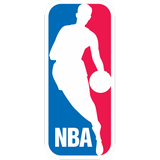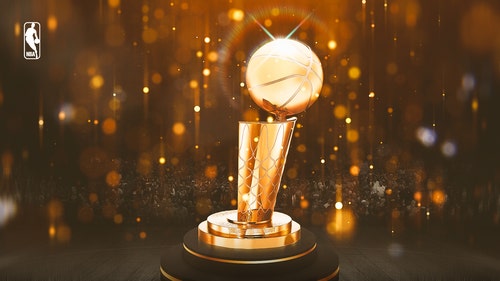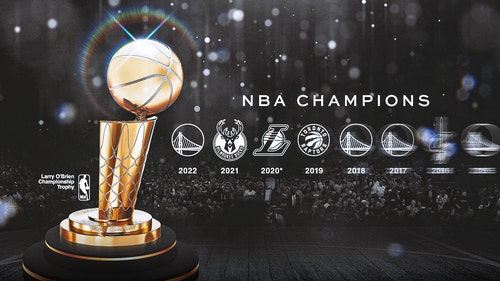
Prospect Calibration: Timothé Luwawu-Cabarrot's flashes
Scouting international prospects solely on tape, without seeing the in-person product and without reliable statistical translations based on league quality of play is a dicey endeavor. I learned this last year with Isaia Cordinier, who had some incredibly appealing flashes of athleticism and agility playing in the French B League, but upon seeing him in person for five minutes at Hoop Summit practices, it was pretty clear his game would not translate (at least immediately). It’s just a different ballgame in person.
For many on NBA Draft Twitter last year, Timothé Luwawu-Cabarrot was the subject of much intrigue. A 6-foot-6 wing with a 6-foot-11 wingspan, paired with outstanding horizontal athleticism and the vertical bounce to finish emphatically above the rim, generates a lot of interest in a league climate where two-way wings are in high demand. Add in adequate ball-skills and some feel, and you can see why some had Cabarrot as a top-10 pick last June.
There was still a level of uncertainty trying to evaluate Cabarrot from both his team style context and league level of competition. Cabarrot’s team, Mega Leks, played a very open, high-pace style offensively, that really emphasized transition play with a bunch of young players. The Adriatic League also isn’t stocked with nearly the same talent level as other premiere leagues like the Spanish ACB. Basically, when you include these factors to never seeing a player in person, even when you see eight or nine full games of action, the analysis is incomplete.
Read More: Finding joy in the mini victories for the Philadelphia 76ers
I had the opportunity to see Cabarrot in Vegas for summer league play, and certain concerns were immediately evident. Cabarrot has a slender build which is really obvious when you place him a few feet away from more developed athletes. He also plays smaller than his size in terms of physicality and intensity. Furthermore, his handle completely betrayed him in Vegas and combining that with questions about his build, he looked much farther away than I expected, which was somewhat disconcerting for a 21-year-old.
Struggling to gain court time for the Philadelphia 76ers to start the year, mostly due to Nick Stauskas’ early season shooting and slashing surge, Cabarrot was sent to Philadelphia’s D-League affiliate multiple times. However, over the last month Cabarrot has earned regular rotation minutes, providing an actual sample to analyze his progress.
As mostly a 3-and-D centric player archetype, Cabarrot’s shooting off the catch is his most paramount skill to develop, in conjunction with his defense, to his long-term success. He was by no means an established shooting threat entering the league. On 272 career 3-point attempts internationally, he converted 90 for a tolerable 33 percent. From the foul-line, he made 172 of a career 237, a decent 72.5 percent clip. His 3-point shooting jumped by seven percent between ages 19 and 20, but his free-throw percentage fell off by almost the same seven percent with a greater sample. Basically, Cabarrot was far more of a ceiling projectable shooter than an established marksman.
Cabarrot does have smooth mechanics. He doesn’t get a ton of lift on his shot, but he shoots an easy, smooth ball off the catch, where he releases in front of his face, holds his follow-through and has nice wrist action.
Cabarrot’s preparatory footwork catching off the hop was a noticeable rhythmic strength on Mega Leks that has carried over to this season. In the following clip, notice his footwork and how he doesn’t dip the ball below his waist level when he receives the pass, speeding up his release time.
You see the fluid overall stroke play out in the ability to shoot over closeouts and contests. At 6-foot-6, Cabarrot has good size for a smaller wing, but in order to get off a high volume of 3s, limiting the moving parts is crucial. Here, he misses the shot, but his release is fast enough to get off the attempt over an aggressive Shabazz Muhammad closeout.
Cabarrot is only 6 for 21 from 3 this year, but that sample is entirely too small to draw conclusions from. I think people are generally too optimistic about projecting shooting improvement. If a player’s form isn’t broken it doesn’t automatically mean the ball will go in at a high rate eventually. Cabarrot may never be a plus shooter off the catch, but he has some decent indicators in his profile and his stroke satisfies the eye-test. Having watched Mega Leks a decent amount last year I think a lot of Cabarrot’s inefficiency was tied to shot selection in taking on a more significant creator role. He’s not adept shooting off the dribble, and probably never will be, and struggles creating with craft around the basket, so with more role refinement in shooting mostly off the catch he could thrive with enhanced efficiency in the future.
As largely an off-ball player on Philadelphia moving forward, Cabarrot will have to refine his cutting impact. He shows promising signs of cutting awareness, as in the following clip where he darts to the basket when he notices Tomas Satoransky turns his head, and his teammates vacate the lane. He misses an inexcusable uncontested layup, but the idea was right.
The following clip might be a more designed action instead of a pure read-and-react type of play, but Cabarrot again shows good instincts cutting backdoor when Jason Terry loses sight of him one pass away.
Where Cabarrot really can excel is cutting in transition, where his plus-speed changing ends really comes into play.
Mostly a straight-line driver at this stage due to a loose handle, Cabarrot has to rely on attacking closeouts and his first step in on-ball situations to get to the basket. Here, he blows by Trey Burke and flashes ability to finish through contact (which he normally does not).
Again, we see Cabarrot’s plus-first step as he blows by Courtney Lee in an isolation situation for a left-handed finish this time.
Cabarrot flashes the ability to develop a more nuanced slashing game if his handle develops and he adds much needed strength to finish through contact, showcasing a nice left-to-right spin here.
He also flashes ambidexterity as a finisher.
Finishing through contact, next to handling, is Cabarrot’s biggest weakness right now. His frame is just so slender and he gets dislodged way too easily by bigger bodies in traffic. Here, Cabarrot is comically dislodged by Greg Monroe on an early offense slashing opportunity, where his lack of balance is notable.
Core strength is paramount for Cabarrot, as is more confidence and experience finishing in a crowd.
Like most rookies who garner largely off-ball roles, we haven’t gotten a chance to see Cabarrot’s playmaking to a great extent yet. He does have some vision and was comfortable playing in pick-and-role settings at Mega Leks, showing the ability to read the floor. There are ball-skill flashes however, like this two-man game with Joel Embiid where he showcases the nice pocket pass.
This early offense blow-by and drop-off to Ersan Ilyasova was a simple read but it’s still good to see on the move.
Cabarrot’s overall impact will likely come down to his success as a shooter and as a defender. One of the reasons I was so high on him entering the draft is he projected to be an elite “1-2” defender who had the twitchiness to defend the point of attack. His contribution defending in that fashion isn’t as valuable as elite bigger wing defense, but employing him in that role would make for an excellent fit next to a high-usage offensive lead guard or a point forward type like Ben Simmons.
Cabarrot is just a freak athlete in terms of speed, side-to-side agility, and change of direction. This was probably his most notable play of the season, where he mirrors an athletic Kris Dunn for three-quarters of the court, flipping his hips quickly twice at full-speed and staying attached enough to block the shot.
There aren’t a lot of 6-foot-6 wings who have the athleticism and hip flexibility to make that play. This was the sequence where those who watched Cabarrot closely pre-draft did a fist pump.
The Sixers have employed Cabarrot defensively on lead guards a decent amount, and he has demonstrated the ability to wall-off, staying in front. Here, watch him backpedal effortlessly defending Kyle Lowry in space, and then quickly react to his in-and-out dribble keeping Lowry in front.
Cabarrot has the agility and body type to stay skinny getting over screens at the point of attack in pick-and-roll, but he still gets dislodged too easily with his frame. You see that getting caught on the screen aspect on the following pin-down curl, but at least he shows good instincts to recover for the steal.
Cabarrot is by no means a polished defender yet, as most every rookie wing isn’t. He loses focus off-ball and commits too many fouls. It’s more about projection based on positive flashes. He has the hip flexibility to sink and explode with more refined footwork getting around picks, and certainly has the top-notch speed to chase shooters on floppy sets. When you pair these qualities with legitimate length, you have a very appealing skill-set to defend three positions most of the time.
Overall, Cabarrot is flying under the radar as a potential long-term starter for the Sixers, sliding in next to franchise pillars Embiid and Simmons as a 3-and-D wing who can defend opposing lead guards for added impact. Cabarrot’s versatility, especially defensively, could allow Philadelphia to select a one-position defender type like Lonzo Ball or Malik Monk in the lottery this year, with Cabarrot defending ones and Robert Covington checking bigger wings. A starting lineup of Ball/Cabarrot/Covington/Simmons/Embiid is a very conducive long-term two-way mix of players for example.
Cabarrot might not reach the level of shooting Philadelphia will need out of him in that setting, but has projectable two-way starter upside in a specific role that could really compliment the Sixers’ primary players. With more handling refinement and strength acquisition, Cabarrot could even develop secondary handler (he obviously wont be a secondary option) prowess in pick-and-rolls when the defense is already bent.
Malcolm Brogdon has garnered most of the early season steal of the draft talk, but Cabarrot has the ability to push for that honor long-term. The baseline is there.
More from FanSided
This article originally appeared on









